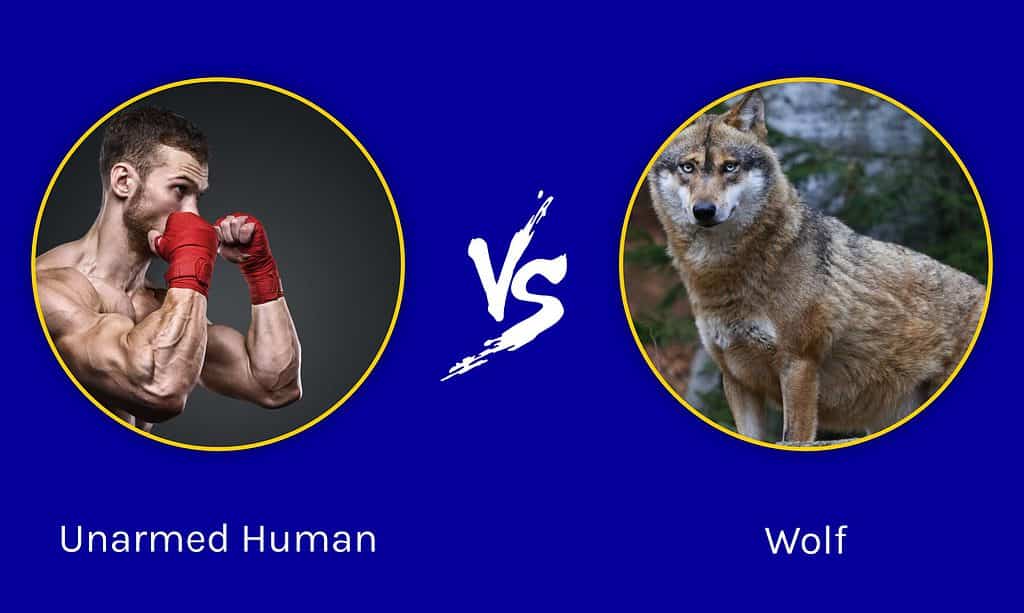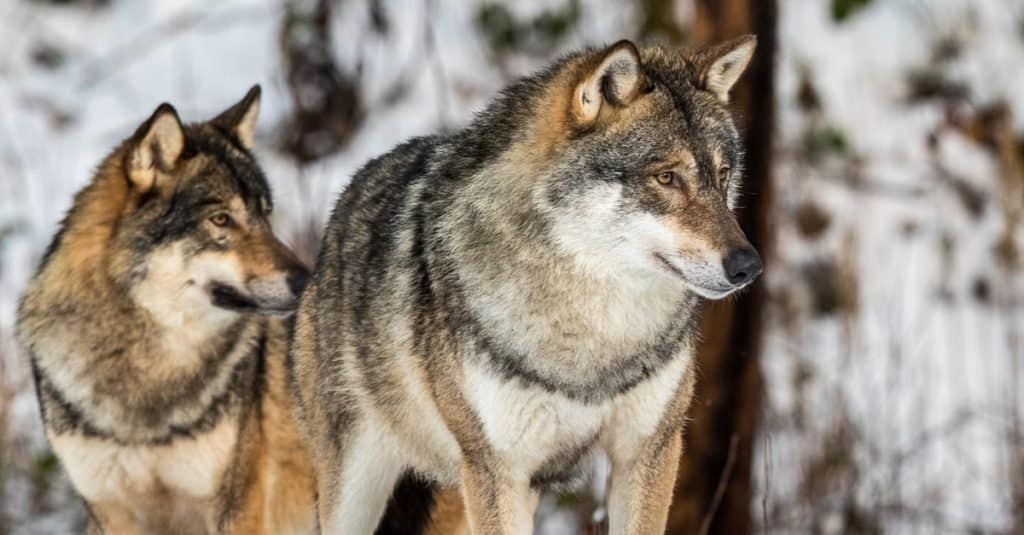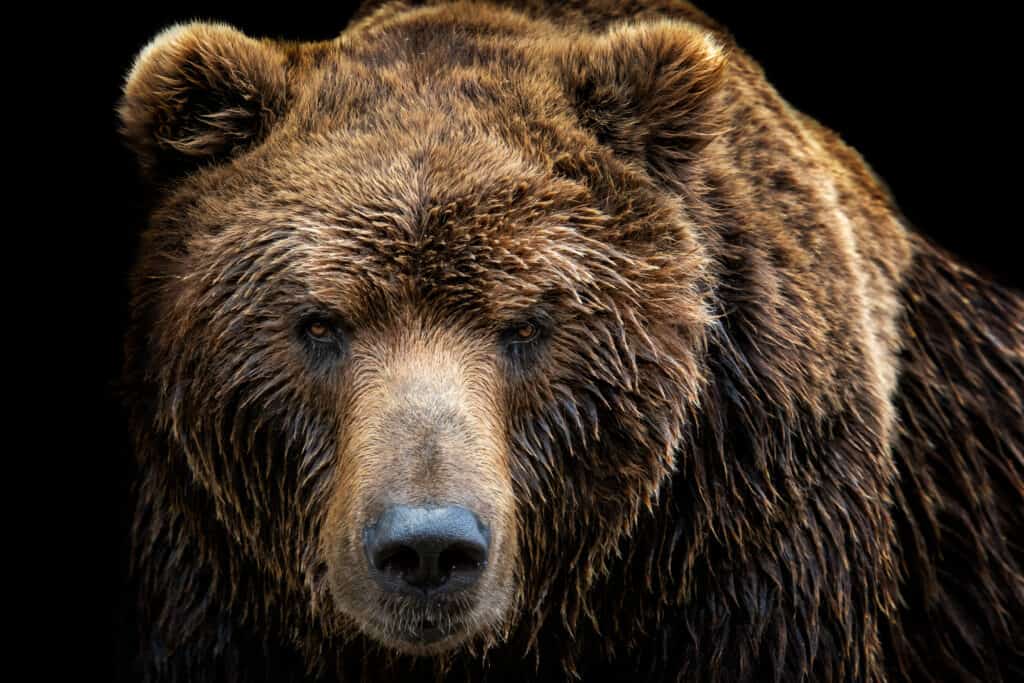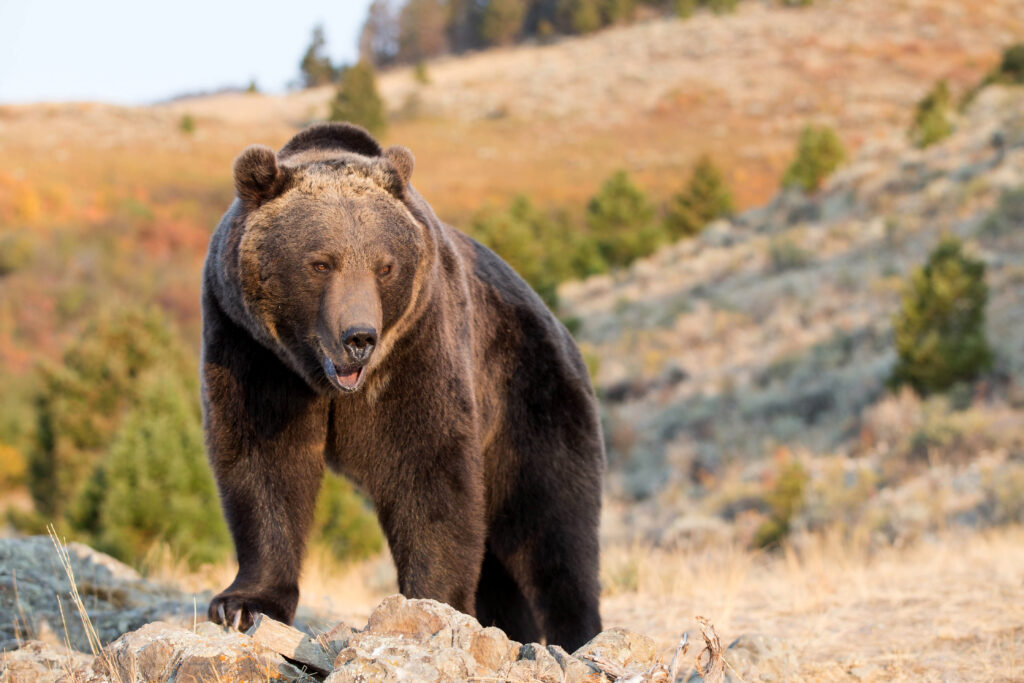Wolves are large mammals that often hunt in packs to bring down large prey. Together, they can stand their ground against bears. While it’s tempting to think of these animals as our beloved dogs’ cousins, a wolf is not merely a large dog. It is much bigger and deadlier. That makes us wonder, would an unarmed human beat a wolf in a one-on-one fight?
We’ll investigate this battle and show you whether the human or the wolf manages to rise to the occasion. For these purposes, we’ll use the measurements of the gray wolf and data from the CDC for human background information.
Comparing an Unarmed Human and a Wolf

| Unarmed Human | Wolf | |
|---|---|---|
| Size | Weight: often between 125 and 200 pounds Height: average from 5 feet 3 inches to 5 feet 9 inches, with taller and shorter humans possible | Weight: often weigh between 80 and 150 pounds, usually 110 as a high range Height: from 2 to 3 feet at the shoulder Length: roughly 3.5 to 5 feet |
| Speed | – The fastest human speed ever recorded was about 27.5 mph – Most people run at speeds of between 6 and 8 mph | – Has a top speed between 30 and 40 mph |
| Defenses | – Intelligence is humankind’s best defense – Lack of defenses to lessen impacts, punctures, or cuts – Have weak spots at the neck, groin, and head | – Wolves have thick fur to protect them against bites – Their speed and agility can help them dodge attacks and escape from battles that aren’t in their favor – Wolves often live in packs, granting them safety in numbers |
| Offensive Capabilities | – May strike, choke, or grapple opponents – Many can lift their body weight with their arms and use their legs to exert even greater forces – Weak bite force around 160 PSI | – Have a bite force between 400 and 1,000 PSI – Canine teeth can measure as much as 2.5 inches in length – Often use a mix of biting, speed, power, and body weight to drag prey to the ground |
| Predatory Behavior | – Often relies on ambushes to successfully trap or attack enemies – Without weapons, a human will find it hard to ambush, so they’ll try to wear down and outsmart their foe | – Mostly cursorial predators which outrun and outlast their prey – Often hunt in small groups, so they’re capable of attacking solo – Frequently take down prey larger than themselves |
What Are the Key Factors in a Fight Between an Unarmed Human and a Wolf?
Determining whether a human or a wolf wins a fight comes down to size, speed, and the way that each animal can deal damage to the other. However, we also need to look at the ways that each creature attacks other animals and defends itself. We’ll show you how each animal measures up in five different ways and use that data to name a winner.
Unarmed Human vs Wolf: Size

Humans are larger than wolves.
©restyler/Shutterstock.com
The average human is taller and heavier than a wolf. The average human male weighs up to 200 pounds and stands about 5 feet 9 inches tall. Of course, humans can be much lighter, or they can be much heavier than this measure. They can also grow taller too.
Meanwhile, wolves weigh between 80 and 150 pounds, grow between 3.5 and 5 feet long, and stand between 2 and 3 feet at the shoulder.
Humans have a big size advantage.
Unarmed Human vs Wolf: Speed
Wolves are much faster than humans. They can run at speeds of up to 40 mph when catching prey. Meanwhile, the fastest human of all time hit 27.5 mph or so while in the middle of a sprint. The average person can barely break the 10-mph mark when running.
All told, the wolf has a serious speed advantage in this bout.
Unarmed Human vs Wolf: Defenses
The average wolf relies on its pack size, speed, and agility to stay safe from harm. Meanwhile, humans rely on their intelligence to stay out of harm’s way. Without tools and weapons, though, humans are somewhat helpless to protect against true predatory animals like wolves. We have too many weak spots and few means of counterattacking available.
Wolves have better defenses than humans.
Unarmed Human vs Wolf: Offensive Capabilities
Humans rely on their intelligence and tools to overcome most animals. Without those, they can punch, kick, bite, and try to choke other animals. However, humans are relatively weak compared to other primates and many other wild animals. Human bites are weak, and our teeth are too small to do damage, especially in this case.
Meanwhile, we don’t know the full biting power of wolves. Some tests have found that they bite with a force of 400 PSI, but some estimates range up to 1,000 PSI outside of lab conditions. It’s hard to get wolves to bite with all their force in a lab, so we don’t really know how hard they can bite.
Either way, they can tear the flesh off of animals much larger than humans, so that information will suffice for this fight.
Unarmed Human vs Wolf: Predatory Behavior

Wolves are known predators.
©Lillian Tveit/Shutterstock.com
Without weapons, humans have to rely on ambushing most animals to win a fight or tiring them out by chasing them for a long time. The only thing we have going for us is our wits and endurance.
Wolves are cursorial predators. They are experts at chasing down prey and injuring it until it’s too tired to fight back. When their target is too exhausted to put up a fight, they bite at the neck or snout of their prey and finish it off. That’s when they’ll start tearing the animal apart.
Wolves have much better predatory behaviors than humans and another advantage in this fight.
Who Would Win in a Fight Between an Unarmed Human and a Wolf?

Wolves are too strong, fast, and ferocious for a person to overcome.
©Bildagentur Zoonar GmbH/Shutterstock.com
An unarmed human could not beat a wolf in a fight. Wolves are too strong, fast, and ferocious for a person to overcome in the vast majority of cases. They are not merely big dogs. Wolves are apex predators that would make any lone person recoil in fear should they encounter one in the wild.
The only chance that a human would have in this fight would be to somehow use their strength and body weight to take down and potentially choke the wolf to death. That’s not going to happen, though. An unarmed human will not stand a chance against a wolf.
Before you imagine yourself putting a wolf in a chokehold, you have to realize that even most domesticated dogs can fight their way out of having their nails clipped. So, you don’t stand a chance at besting a wolf because they are vicious and incredibly strong.
What would most likely happen is the wolf would stalk the human, waiting for them to make a move. If the human runs, the wolf will follow, waiting on the individual to get tired. That’s when the attack will come, and the person will be too exhausted and scared to fight back.
If the person stands and fights, the wolf will probably test them by lunging and dodging, delivering a bite here and there. Eventually, the wolf is going to see that there isn’t much in the way of danger in this battle and attack. The human will go down in so much pain that they won’t be able to fight back in any meaningful way.
What Animal Can Take Down a Wolf?
Any foe capable of taking down this wily foe which rarely shows up without backup will have to be able to match the wolf’s agility with raw strength and a lengthy reach and sheer force. One such predator capable of giving this wild canid pause is an apex predator in its own right:

Immensely powerful, the grizzly is capable of lifting 1,000 lbs in weight
©Lubos Chlubny/Shutterstock.com
The Brown Bear: More precisely, it is the grizzly (Ursus arctos horribilis), which is known to occupy the same ranges as the gray wolf, which we shall be referring to in this case. Capable of reaching a whopping 710 lbs, this massive predator is capable of exceeding 7 feet in height.
It is also capable of lifting 1,000 lbs meaning there is a real possibility of the wolf getting slashed by those razor-sharp claws and tossed into the air, to land several feet away.
A gray wolf would also have to contend with that bite force of 1,160 PSI and equally sharp fangs. With all that in mind, it is no surprise that wolves often decide that discretion is the better part of valor where this lumbering omnivore is concerned.
What Wild Animals Can a Human Defeat Barehanded?

In polls, the general consensus is that humans feel the least confident in fighting a
grizzly bear
barehanded.
©Dennis W Donohue/Shutterstock.com
We’ve ruled out the wolf as a foe a human could take on successfully barehanded. But what wild animals could a human triumph over in hand-to-hand (or paw) combat? People don’t like to purposely put themselves in harm’s way, as our instinct, just like wild animals, is survival. While gladiators put themselves in jeopardy by battling wild animals in ancient times, we modern-day folks can only imagine what animals we think we could beat out.
An interesting poll was taken of Americans by YouGov asking them what animals they believed they could beat in a fight. The results were as follows:
- Rat – 72%
- House Cat – 69%
- Goose – 71%
- Medium-Sized Dog – 49%
- Eagle – 30%
- Large Dog – 23%
- Chimpanzee – 17%
- King Cobra – 15%
- Kangaroo – 14%
- Wolf – 12%
- Crocodile – 9%
- Gorilla – 8%
- Elephant – 8%
- Lion – 8%
- Grizzly Bear – 6%
As you can see, wolves are fairly low on the list, with the lowest being grizzly bears. The number one animal most Americans think they can defeat in a fight is a rat! Ha! “House cat” is an interesting label, as it leaves out feral cats. Those poor kitties!
While people, especially men, enjoy imagining what wild animals they could kill barehanded, we’d like to give props to Travis Kaufman, a Colorado jogger who was attacked by a mountain lion while jogging and actually killed the animal with his bare hands! The attack happened in 2019, and his battle made national news. We now know that it is possible for a human to kill a mountain lion with his bare hands. Amazing!
The photo featured at the top of this post is © Nagel Photography/Shutterstock.com
Thank you for reading! Have some feedback for us? Contact the AZ Animals editorial team.






